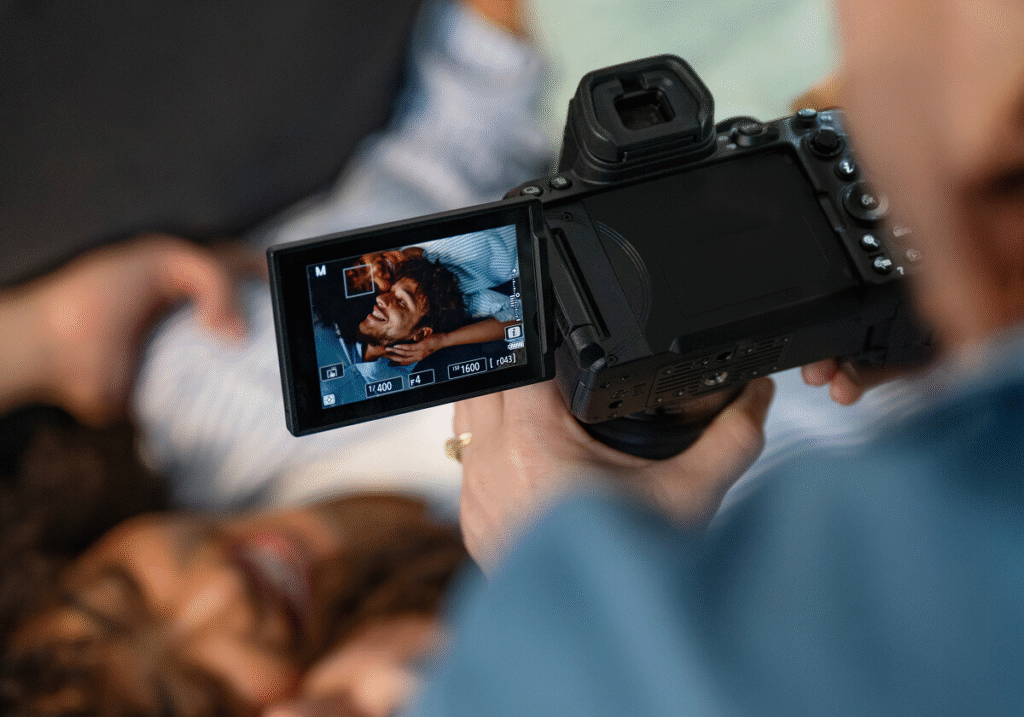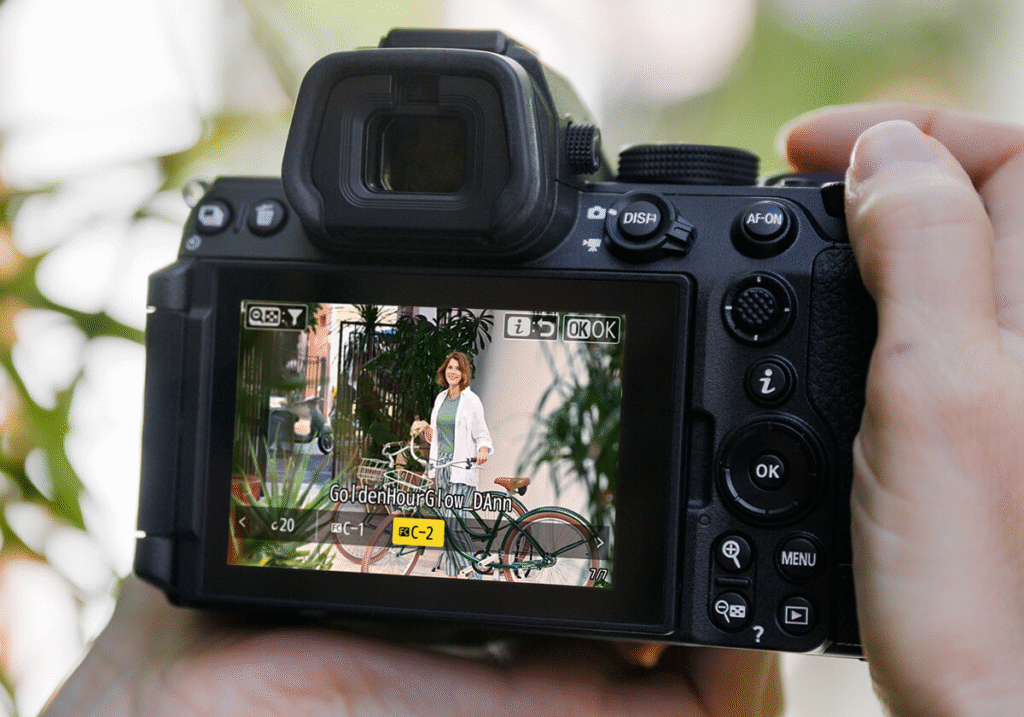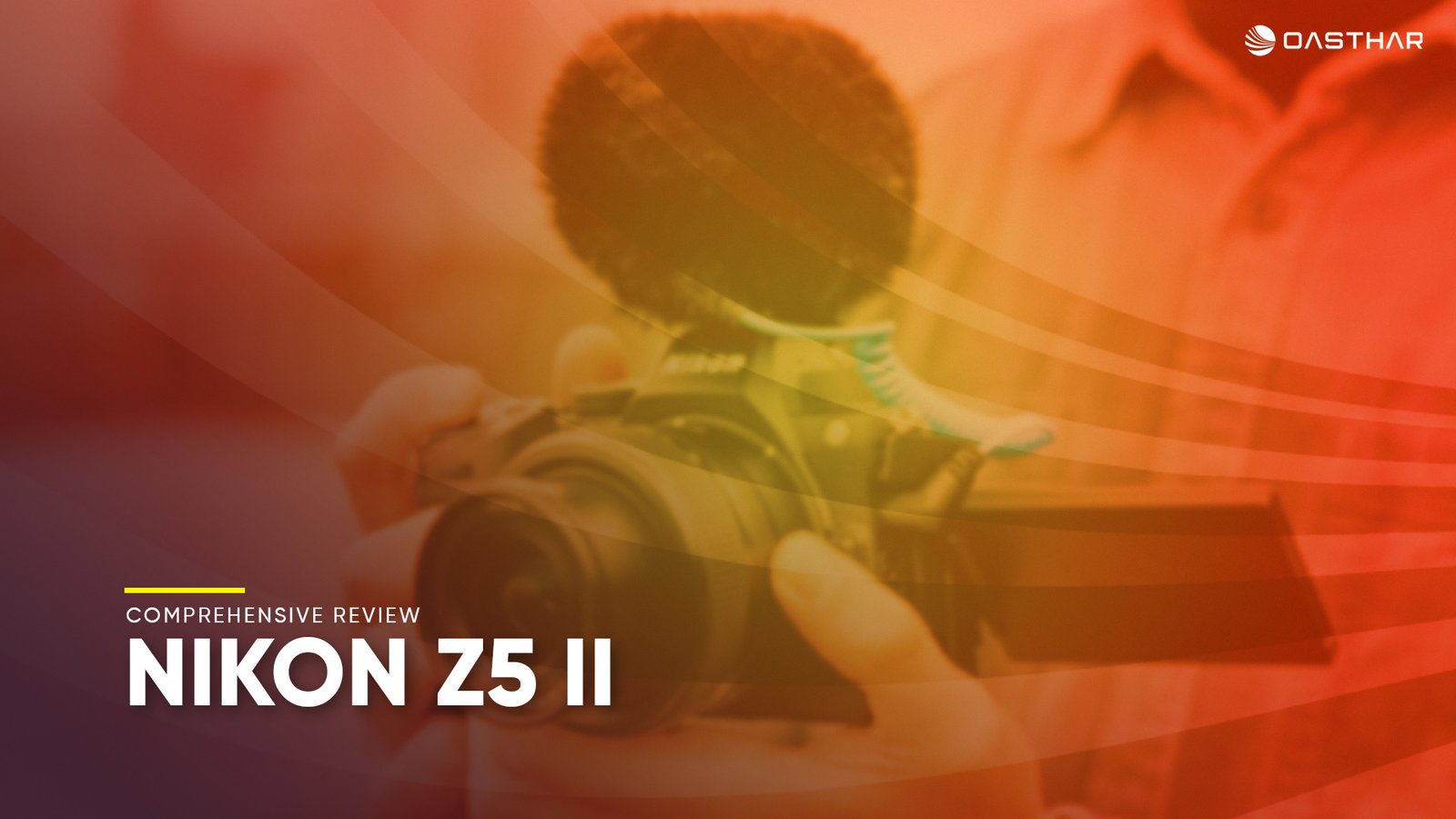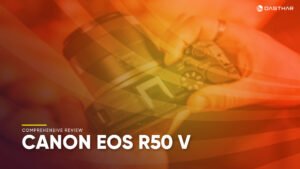Discover if the Nikon Z5 II lives up to the hype with improved autofocus, Expeed 7, and versatile features for both photo and video enthusiasts.
The Nikon Z5 II arrives as Nikon’s answer to the increasingly competitive sub‑$2,000 full‑frame mirrorless market, blending solid ergonomics with a feature set once reserved for higher‑end bodies.
In this in‑depth Nikon Z5 II review, we’ll explore how in‑body image stabilization, a 3,000‑nit EVF, and the potent Expeed 7 image processor elevate this camera above its predecessor.
From handling and battery life to autofocus performance and video chops, we’ll dissect every aspect to see whether the Nikon Z5 II truly redefines entry‑level excellence . Whether you’re upgrading from an APS‑C rig or seeking your first full‑frame, this review covers all you need to know.
Related: Insta360 X5 Review
Design & Build Quality

The Nikon Z5 II maintains the classic form factor introduced with the original Z5—but refines key elements to enhance handling and durability. The deep, sculpted grip feels secure even when paired with larger telephoto lenses, borrowing ergonomics from Nikon’s higher‑end Z bodies.
Its magnesium‑alloy top and rear chassis deliver a reassuring heft without tipping the scales above 600 g, making it both robust and portable. Weather sealing around all seams, buttons, and the battery door ensures resistance against dust and moisture, ideal for outdoor shoots in challenging environments .
Controls on the Nikon Z5 II are thoughtfully laid out: a dedicated Picture Control button sits atop the camera for quick access to custom presets, while the dual‑function Fn1 and Fn2 buttons can be programmed for frequently used settings . The mode dial offers a reassuring click with each position, and the multi‑selector joystick provides rapid AF point selection. Despite its entry‑level positioning, the body exudes a professional build, with all buttons featuring crisp actuation and a logical layout that veteran Nikon shooters will immediately recognize.
Key Design Highlights
- Deep Grip: Comfortable for extended shooting sessions.
- Magnesium-Alloy Build: Durable yet lightweight.
- Weather Sealing: Protection for all‑weather use.
- Custom Buttons: Fully programmable Fn1/Fn2 and Picture Control button.
Display & Electronic Viewfinder

Nikon has upgraded the display system significantly on the Nikon Z5 II. The rear 3.2‑inch tilting touchscreen now articulates fully for high‑ and low‑angle shooting, providing clear framing in landscapes and vlogs alike . Touch‑to‑focus and intuitive pinch‑zoom gestures make reviewing images painless, and the display supports live view adjustments with minimal lag thanks to the faster processor.
The electronic viewfinder (EVF) sees perhaps the most dramatic improvement: a 3,690‑kdot OLED panel capable of up to 3,000 nits of brightness ensures crisp, contrasty previews even under harsh sunlight . The increased refresh rate virtually eliminates blackout during continuous shooting, making it feel as fluid as an optical finder. Fine details are rendered sharply, and the EVF’s improved dynamic range helps in judging exposures and focus accuracy.
Internally, the EVF supports real‑time histogram overlays, composition guides, and zebra warnings for highlight clipping. While the original Z5’s EVF was serviceable, the Nikon Z5 II’s viewfinder elevates the shooting experience, especially for professionals accustomed to high‑end Nikon Z bodies.
Performance & Software Experience

At the heart of the Nikon Z5 II lies the Expeed 7 image processor, the same powerhouse found in Nikon’s flagship Z8 and Z9 cameras. Combined with the 24.3‑megapixel full‑frame CMOS sensor, it delivers snappy performance across stills and video. Mechanical shutter burst rates reach up to 14 fps and 11 fps, while the electronic shutter boosts JPEG bursts to 30 fps and RAW to 15 fps—a substantial leap for action and wildlife photographers shooting under $2,000.
Autofocus on the Nikon Z5 II benefits from 3D‑tracking subject detection, covering nine subject types including humans, animals, and vehicles. This system rivals that of higher‑end models, offering eye‑AF for both humans and animals with remarkable accuracy. AF acquisition feels instantaneous in most conditions, including low light down to -4 EV. The new AF‑A mode automatically switches between single‑point and continuous tracking based on subject movement, simplifying setup for mixed shooting scenarios.
Software improvements include an updated menu system mirroring Nikon’s pro bodies, streamlined Picture Control presets, and in‑camera pixel shift multi‑shot mode for generating 96 MP images when processed through Nikon’s NX Studio software. Connectivity via the SnapBridge app allows seamless image transfer and remote control, although initial pairing can be temperamental on some Android devices.
Battery Life & Charging

The Nikon Z5 II uses the EN-EL15c battery, promising up to 470 shots per charge via the viewfinder and over 1,100 shots when using the rear LCD. Real‑world testing with image stabilization and frequent AF hunting yielded around 400 EVF shots on a cold day, which is respectable for a mirrorless full‑frame.
Fast USB‑C charging supports both in‑camera charging and power delivery, allowing photographers to top up between breaks without removing the battery. A fully drained battery reached 80% capacity in roughly 90 minutes when charging via a 15 W PD adapter and took about two hours for a full charge inside the camera. The camera also runs fine when tethered to a power bank, making it suitable for timelapse and extended event shooting.
For prolonged outings, users can supplement with the optional MB-N11 battery grip, which houses two EN-EL15c cells for doubled endurance and adds a vertical shutter release—a boon for portrait sessions.
Camera Quality & Autofocus

Image quality from the Nikon Z5 II builds on the original’s strong foundation. The 24.3 MP sensor captures fine detail with pleasing tonal gradations and excellent dynamic range—over 14 stops when shooting RAW, according to lab tests. High‑ISO performance remains a highlight: ISO 6400 images show minimal luminance noise, and ISO 12,800 frames are still remarkably usable for critical work.
Autofocus performance is a defining upgrade. The 3D tracking and subject detection algorithms pull directly from Nikon’s Z9, offering confident focus on moving subjects in continuous AF‑C mode. Testing on fast‑moving runners yielded over 90% keep rates at 10 fps, a stark improvement over the original Z5’s sluggish burst AF. The AF system maintains accuracy even in dim lighting down to -4 EV, making it viable for indoor sports and low‑light events.
Video quality also impresses: the Z5 II shoots 4K at 30 fps using the full sensor width and supports 4K 60 fps via a 1.5× crop. Nikon’s first 12‑bit N‑RAW recording directly to SD cards enables deeper post‑production flexibility, and 1080p slow‑motion at 120 fps adds creative options without external recorders.
Connectivity & Features

Connectivity on the Nikon Z5 II covers all modern bases. Dual SD UHS-II slots allow simultaneous backup or overflow recording, while Wi‑Fi and Bluetooth enable wireless file transfer and remote control via SnapBridge. A full‑size HDMI Type A port delivers clean 10‑bit 4:2:2 output to external recorders, essential for serious video work.
Additional features include:
- Pixel Shift Multi‑Shot generating 96 MP composites.
- Pre‑Capture Mode, which saves images up to 0.5 s before the shutter trigger.
- Built‑in focus stacking for extended depth‑of‑field in macro work.
- Timecode support and zebra highlighting for professional video.
The inclusion of a fully articulating touchscreen, mic and headphone jacks, plus an ethernet-compatible USB-C port, rounds out the Z5 II as a hybrid tool for creators who switch between photo and video roles.
User Experience & Practicality

From the moment you unbox the Nikon Z5 II, the shooting experience feels premium. The redesigned menus mirror those of the Z6 III and Z8, enabling a gentle learning curve for Nikon veterans and newcomers alike. Touch operation in live view and playback modes is responsive, and the customizable control scheme means you can tailor the camera to your workflow.
Handling long lenses benefits from the solid tripod mount and ergonomic grip; IBIS provides up to 5.0 stops of stabilization, allowing sharper images at slower shutter speeds without a gimbal. The camera’s relatively compact footprint and weather sealing make it a go‑anywhere companion, whether perched on a mountain overlook or running between conference sessions.
One quirk: initial Wi‑Fi pairing can be finicky on certain Android phones, requiring multiple attempts before stable connectivity is achieved. Once set up, though, SnapBridge reliably transfers JPEGs and RAW files, and remote control via a live view feed is smooth.
Pricing & Value for Money

With a launch price of $1,699.95 for the body alone (kit with 24‑70 mm f/4 S around $2,400), the Nikon Z5 II sits just above its predecessor but justifies the premium with substantial upgrades. Competitors in this segment include the Canon EOS R8 ($1,499), Panasonic S5 II ($1,999), and Sony A7 III ($1,798). Against these, the Z5 II’s Expeed 7, 3D tracking, and 12‑bit N‑RAW recording give it an edge in both stills and video workflows.
When factoring in dual card slots, superior EVF brightness, and Nikon’s renowned color science, the Nikon Z5 II offers one of the strongest value propositions for hybrid shooters and photographers seeking true full‑frame performance under the $2,000 threshold.
Final Verdict
The Nikon Z5 II transcends entry‑level expectations by adopting technologies from Nikon’s flagship models and delivering them in an affordable, well‑built package. Expeed 7 processing, 3D autofocus, in‑body image stabilization, and 12‑bit N‑RAW video elevate its capabilities well beyond the original Z5, making it a compelling choice for enthusiasts and professionals alike.
While the price bump may deter strict budget seekers, the gains in autofocus, burst speed, and video features justify the investment. If you’re in the market for a versatile full‑frame mirrorless camera that handles everything from landscapes to sports and delivers pro‑level video specs, the Nikon Z5 II is hard to beat.




